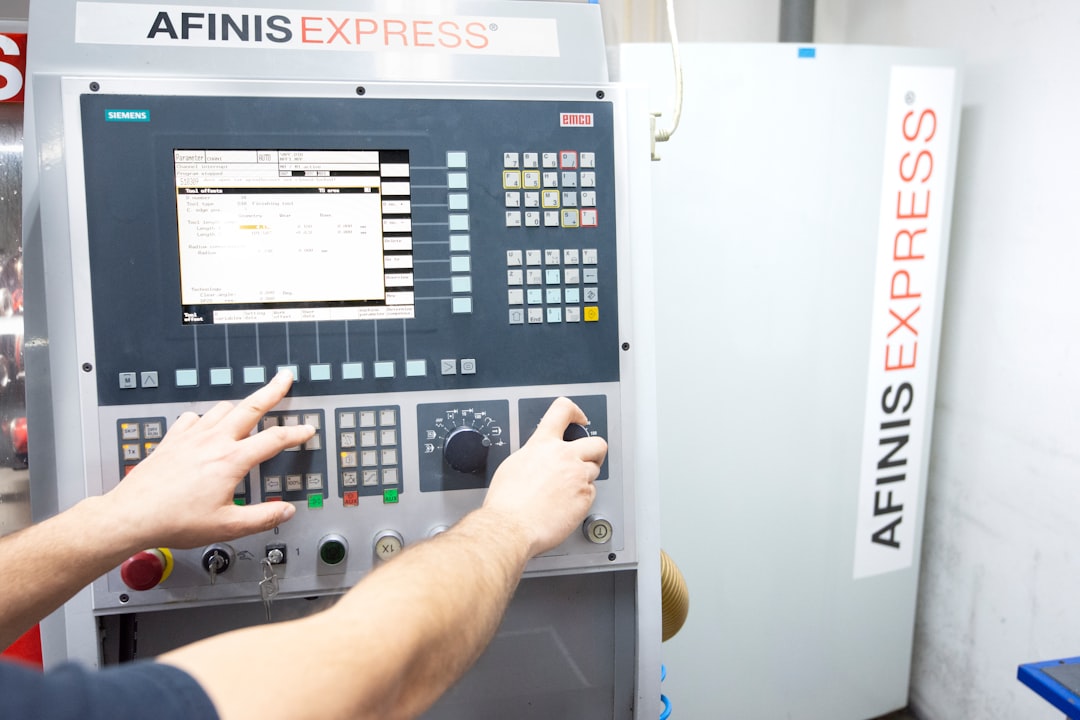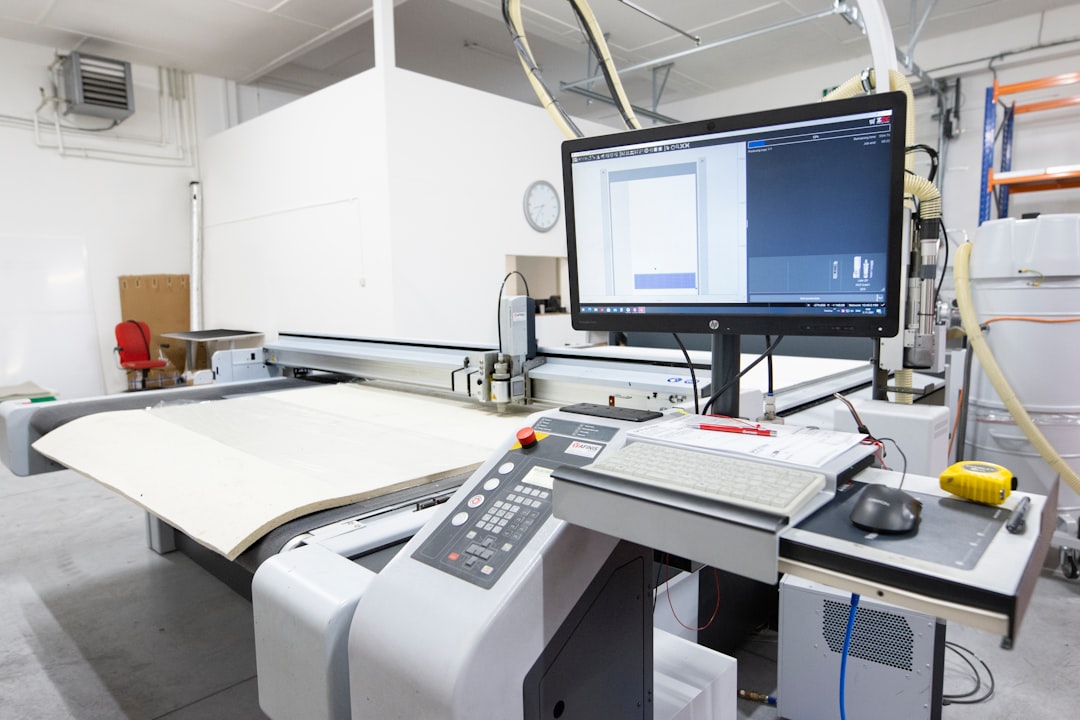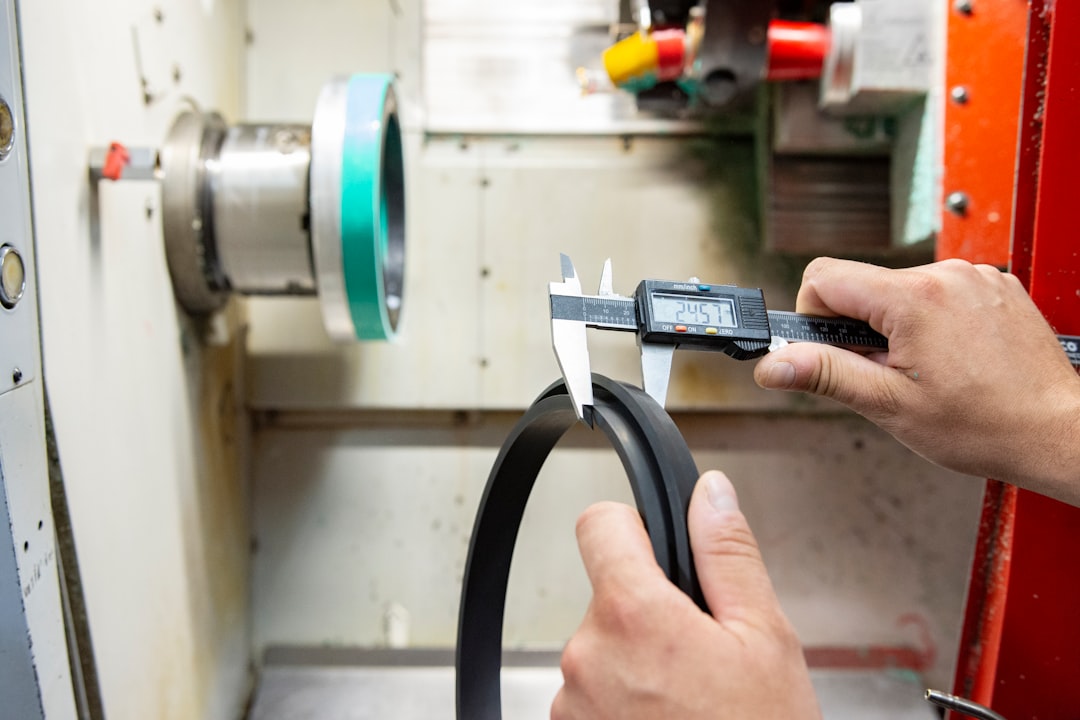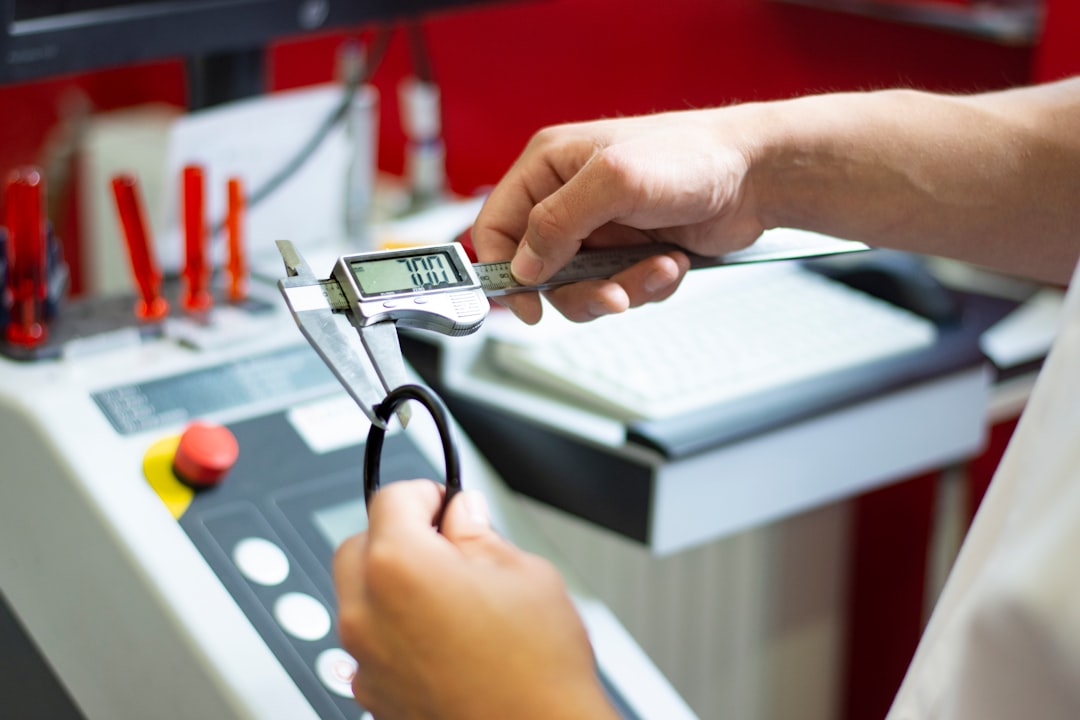
Supercharge your lead generation with a FREE Google Ads audit - no strings attached! See how you can generate more and higher quality leads
Get My Free Google Ads AuditFree consultation

No commitment
Supercharge your lead generation with a FREE LinkedIn Ads audit - no strings attached! See how you can generate more and higher quality leads
Get My Free Google Ads AuditFree consultation

No commitment
Supercharge your lead generation with a FREE Meta Ads audit - no strings attached! See how you can generate more and higher quality leads
Get My Free Google Ads AuditGet My Free LinkedIn Ads AuditGet My Free Meta Ads AuditFree consultation

No commitment
Supercharge your lead generation with a FREE Google Ads audit - no strings attached! See how you can generate more and higher quality leads
Get My Free Google Ads AuditFree consultation

No commitment
In the competitive landscape of digital marketing, leveraging Google Ads can significantly enhance lead generation efforts for Automation System Providers. However, many face the frustration of missing high-value prospects due to incomplete CRM tracking, which leads to lost opportunities. By capturing these prospects with modern tools, providers can ensure their ad spend targets real decision-makers, thereby bridging the gap between awareness and conversion. Timing and precision are critical, as late capture of lead information may allow competitors to engage first. This guide will explore how Google Ads can be optimized to deliver superior results in the automation sector, detailing innovative approaches and actionable insights.

A data-driven approach to lead generation empowers automation system providers to align Google Ads with existing marketing strategies for measurable impact. By integrating campaign data with CRM and sales platforms, marketers gain a unified, real-time view of high-value prospects by leveraging visitor identification technology, ensuring audience lists always reflect current intent.
Precise targeting is critical in the automation sector, where buying cycles are long and decision-makers are highly specialized. Advanced segmentation powered by real-time audience data enables teams to deliver messaging tailored to each stage of the buyer journey—whether initial research or final vendor evaluation.
Landing pages and creative content should be tightly aligned with ad targeting to maximize conversion rates. By consolidating all digital touchpoints, marketers can tailor content and calls-to-action based on specific company interests and user behaviors, driving higher engagement from qualified accounts. Read more about best practices for Google Ads in manufacturing.
Continuous performance optimization is essential for ROI improvement. Automated bidding strategies, powered by up-to-date intent signals, allow marketers to shift budget toward audiences with the highest probability of converting. Advanced ad performance tracking, including both online and offline attribution, ensures that marketing spend is accurately tied to downstream revenue, not just form submissions.
Integration with additional channels—such as programmatic display, social, and email—reinforces the marketing ecosystem for automation system providers. Account-level granularity, enriched through CRM and ad platform sync, enables revenue teams to accurately prioritize leads and orchestrate timely follow-up. Dynamic audience updates keep campaigns relevant as contacts move through the funnel, ensuring no high-potential opportunity is missed. To experience a unified lead generation and automation workflow, get started for free with Sona.

Automation system providers operate in a market defined by technical complexity and highly specialized buyer journeys. Google Ads enables these companies to engage directly with professionals actively searching for advanced automation solutions, reaching decision-makers at the exact moment of intent. This capability ensures providers do not lose visibility to competitors when high-value prospects are making crucial supplier choices. For providers looking to convert anonymous site visitors into pipeline, Sona Identification reveals which companies and people are visiting your website—even if they don't fill out a form.
Traditional audience lists quickly become outdated as companies reorganize, individuals take on new roles, and industry interests evolve. Google Ads solves this challenge by supporting dynamic audience building and precision targeting, allowing automation providers to maintain relevance with real-time audience data. Resources like this overview of practical Google Ads automation strategies highlight how marketers can leverage automation to adapt to shifting in-market signals and unify CRM with web analytics data for more effective targeting.
Capturing high-intent prospects is only part of the equation. Automation system providers benefit from Google Ads’ integrated campaign data analysis, which helps them close the loop between digital engagement and offline sales activity. With advanced attribution and real-time syncing between ad platforms and sales systems, teams can measure ROI accurately and optimize spend toward the audiences and keywords driving pipeline—not just web traffic. If you're ready to see how unified attribution and real-time data can boost your automation marketing, get started free with Sona.


Growth-minded automation system providers are prioritizing vertical keyword targeting to expand beyond traditional campaign footprints. By analyzing specific industry terms, such as those related to advanced robotics integration or PLC programming, marketers can reach new buyer segments that static keyword lists often overlook. These vertical terms capture the nuanced intent of engineers, plant managers, and procurement teams actively searching for automation solutions tailored to their industry. For a deeper look at practical automation strategies in Google Ads, review this overview of Google Ads automation strategies.
Competitor gap analysis remains a key driver for uncovering underserved market segments. By benchmarking against rivals, teams can spotlight keywords and audience segments that competitors neglect, then leverage real-time intent signals and site interactions to prioritize spend where it counts. This dynamic approach enables rapid identification of high-value opportunities, especially when supported by platforms that provide granular visibility into visitor company profiles and intent data.
Industry-specific placements further boost campaign reach and relevance. Targeted advertising on trade publications, technical forums, and niche directories ensures that messaging aligns with the environments where automation decision-makers research solutions. Integrating dynamic audience updates as leads progress through the sales funnel allows for more precise messaging at each stage, while advanced conversion tracking—including both online and offline attribution—offers actionable insights into which placements and segments are driving measurable ROI. When CRM and ad platforms are synced with enriched audience data, every campaign touchpoint becomes an opportunity to accelerate deal velocity and outmaneuver the competition. To start optimizing your campaigns with advanced audience intelligence, get started for free with Sona.

Audience segmentation is foundational for industrial automation marketers who need to reach specialized buyers, from plant managers to systems engineers, across diverse verticals. By defining granular segments according to industrial application, solution type, or technology stack, PPC teams can eliminate wasteful spend and deliver messaging that resonates with each customer’s technical and operational priorities. Segmenting by factors like automation level, factory size, and regulatory requirements also helps avoid disconnected signals that dilute campaign relevance. For a practical overview of Google Ads automation strategies that can refine your segmentation efforts, see this Google Ads automation strategies resource.
Overlaying intent signals further sharpens this approach. When marketers can identify which companies are interacting with key product specification pages or technical documentation, they can prioritize outreach to accounts showing real project interest. Real-time engagement tracking allows budget to shift dynamically toward high-value segments, ensuring that Google Ads for Automation System Providers delivers measurable pipeline growth instead of surface-level engagement.
Customizing ad groups based on segment insights improves message fit and conversion rates. For instance, one group might focus on automotive robotics, while another targets pharmaceutical process automation, each with tailored value propositions and CTAs. Validating conversion paths for every segment ensures that inbound leads flow seamlessly into Sona’s Destinations. This minimizes the risk of data silos or delays that can cause missed opportunities. When CRM and ad audiences stay in sync, sales teams receive enriched profiles immediately, enabling rapid, informed follow-up and supporting a unified, revenue-centric marketing operation. If you’re ready to streamline your audience segmentation and campaign management, get started for free with Sona.

| Industry | Keyword | Monthly Search Volume | Competition Level | Low Bid | High Bid |
| Automation System Providers | long term care pharmacy automation | 10 | LOW | 3.01 | 9.42 |
| Automation System Providers | parata pharmacy automation | 20 | LOW | 1.02 | 22.6 |
| Automation System Providers | automatic payroll systems inc | 30 | LOW | 7.62 | 37.35 |
| Automation System Providers | parata pharmacy robot | 30 | LOW | 1.36 | 8 |
| Automation System Providers | bd pharmacy automation | 40 | MEDIUM | 2.87 | 4.77 |
| Automation System Providers | pharmacy automation solutions | 140 | LOW | 3.85 | 13.33 |
A precision-focused keyword strategy is foundational for automation system providers aiming to maximize lead quality and ad spend efficiency. Strategic keywords such as 'Google Ads automation', 'PPC automation tools', and 'automated advertising solutions' directly map to the solutions sought by operations leaders, procurement managers, and engineers responsible for industrial system upgrades. For a comprehensive overview of practical approaches, review Google Ads automation strategies, and explore our marketing analytics blog for ongoing keyword insights.
These core terms should be continuously optimized to reflect real-time shifts in industry demand and intent. Using advanced analytics, marketers can monitor which queries signal buying readiness versus early-stage research. For example, segmenting campaigns by buyer stage—discovery, evaluation, or decision—allows for highly relevant ad copy and landing page experiences. Service-specific structuring, such as grouping by robotics integration, PLC programming, or controls retrofits, ensures each keyword cluster aligns with the unique decision-making journey of industrial buyers.
Granular account structure is vital for tracking how prospects interact with ads across geographic regions, product lines, and deal stages. By integrating lead data and CRM signals, marketers can enrich automation system provider campaigns with real-world sales outcomes. This enables accurate attribution and smarter budget allocation, as high-intent keyword groups can receive dynamic budget increases based on observed conversion velocity and account progress. As a result, revenue teams move beyond generic traffic to prioritize and personalize engagement for accounts most likely to drive long-term value. To see how this works in practice, get started for free with Sona.
Developing a robust keyword list is an essential first step for automation system providers aiming to attract high-value B2B buyers. Focus on terms that reflect both solution-based queries and specific industry pain points, such as “automated material handling systems” or “PLC integration services.” Apply granular filters to exclude irrelevant traffic, ensuring that every click comes from a potential decision-maker or influencer within your target accounts. Responsive keyword management is crucial: as search trends shift or new products launch, update your lists in real time to maintain alignment with evolving market demand. For a comprehensive approach to pay-per-click advertising tailored for manufacturing, refer to this PPC for manufacturers guide.
With unified campaign data, marketers can see which companies are actively searching for automation solutions and adjust bidding strategies accordingly. Dynamic keyword filters informed by real-time visitor intent allow teams to prioritize budget on high-converting accounts, avoiding wasted spend on out-of-scope industries or competitors’ research queries.
Compelling ad copy is the engine that drives engagement and conversion in the B2B automation sector. Speak directly to the prospect’s technical requirements and operational challenges by highlighting industry certifications, proven ROI, or integration capabilities. Use messaging that differentiates your solution in a crowded market, such as “Reduce factory downtime by 40% with AI-driven robotics” or “Seamless MES integration for discrete manufacturing.” Explore a guide to optimizing Google Ads for B2B for more inspiration on messaging and positioning.
Leverage insights from account-level data to tailor headlines and descriptions to the precise needs and pain points of target segments. Personalized ad variants can be dynamically served to buyers as they progress from research to evaluation, with ad copy evolving in real time based on funnel position and engagement history.
Every ad click should direct prospects to a landing page that echoes the promise and message of the ad while providing a seamless path to conversion. For automation system providers, this means showcasing technical specifications, use cases, and trust signals—such as client logos and compliance badges—above the fold. Streamlined forms should collect only the most relevant lead information, and content offers should be mapped to the prospect’s stage in the buying journey, from downloadable spec sheets to demo requests. Real-time visitor identification technology can match anonymous traffic to company-level profiles, enabling marketers to deliver personalized content experiences and route high-intent leads directly to sales.
By automatically syncing enriched lead data into CRM and marketing platforms, teams can trigger immediate, relevant follow-up based on actual prospect behavior—eliminating lag between online engagement and sales outreach.
Ongoing campaign optimization is vital for maximizing ROI and lead quality in digital marketing automation for automation system providers. Monitor ad performance tracking metrics closely, from keyword-level conversion rates to advanced attribution across online and offline touchpoints. For insights on leveraging automation to streamline campaign workflows, review this overview of practical Google Ads automation strategies.
Integrating campaign data with CRM and sales intelligence systems provides a closed-loop view of lead journeys and revenue impact. Teams can identify disconnects—such as high click volume but low opportunity creation—and make rapid adjustments to audience targeting, creative assets, or landing page flows. This unified, data-driven approach empowers automation system providers to continually enhance campaign performance, eliminate wasted spend, and accelerate sales pipeline growth. To experience these capabilities firsthand, get started for free with Sona.
Expanding your presence as an automation system provider requires a cohesive and data-driven approach that unites content marketing, paid advertising, and audience management. Delivering consistent value across touchpoints elevates brand authority, improves lead quality, and accelerates pipeline growth. To further refine your strategy, explore actionable insights from the Sona blog and review this overview of practical Google Ads automation strategies to improve campaign efficiency.
Maximizing the effectiveness of Google Ads for Automation System Providers involves more than keyword selection and bid adjustments. By integrating advanced visitor identification, real-time intent tracking, and dynamic audience management, marketers can capture high-intent traffic and connect with genuine decision-makers. This approach transforms automated advertising solutions into a unified, performance-driven engine for business growth, ensuring measurable ROI improvement and stronger market penetration. If you're ready to see results, get started for free with Sona.
As we wrap up our exploration of optimizing Google Ads for automation system providers, it's clear that leveraging technology can significantly enhance your advertising strategy. By focusing on automation, you can streamline your campaigns, improve efficiency, and ultimately drive better returns on your ad spend.
Throughout this article, we discussed the challenges of managing complex Google Ads campaigns and highlighted how strategic automation tools can address these issues. From improving targeting precision to optimizing ad delivery times, the solutions we covered provide a comprehensive approach to elevating your advertising efforts.
Imagine transforming your current processes into a seamless, automated system that not only saves time but also maximizes ROI. By adopting the right tools and strategies, you have the potential to revolutionize your approach to digital advertising, making your campaigns more effective and impactful.
To experience the full capabilities of a unified platform that can drive these results, consider taking the next step. Start for free to explore how our platform can empower your advertising strategy and deliver actionable insights tailored to your needs.
The best tools integrate campaign data with CRM and sales platforms to provide a unified view of high-value prospects and support advanced segmentation and automated bidding strategies.
Automation can enhance targeting precision, optimize bidding strategies, integrate real-time audience data, and ensure campaigns are relevant by dynamically updating audience lists.
Look for features like real-time audience data integration, CRM synchronization, dynamic audience updates, and advanced performance tracking for both online and offline attribution.
Setting up automated campaigns involves integrating your Google Ads with CRM systems, using real-time data for audience segmentation, and applying automated bidding strategies to optimize budget allocation.
Automation helps in accurately targeting high-value prospects, optimizing ROI, maintaining up-to-date audience lists, and enhancing the effectiveness of ad spend by focusing on decision-makers with high conversion potential.
Join results-focused teams combining Sona Platform automation with advanced Google Ads strategies to scale lead generation

Connect your existing CRM

Free Account Enrichment

No setup fees
No commitment required

Free consultation

Get a custom Google Ads roadmap for your business
Join results-focused teams combining Sona Platform automation with advanced Meta Ads strategies to scale lead generation

Connect your existing CRM

Free Account Enrichment

No setup fees
No commitment required

Free consultation

Get a custom Google Ads roadmap for your business
Join results-focused teams combining Sona Platform automation with advanced LinkedIn Ads strategies to scale lead generation

Connect your existing CRM

Free Account Enrichment

No setup fees
No commitment required

Free consultation

Get a custom Google Ads roadmap for your business
Join results-focused teams using Sona Platform automation to activate unified sales and marketing data, maximize ROI on marketing investments, and drive measurable growth

Connect your existing CRM

Free Account Enrichment

No setup fees
No commitment required

Free consultation

Get a custom Google Ads roadmap for your business
Over 500+ auto detailing businesses trust our platform to grow their revenue
Join results-focused teams using Sona Platform automation to activate unified sales and marketing data, maximize ROI on marketing investments, and drive measurable growth

Connect your existing CRM

Free Account Enrichment

No setup fees
No commitment required

Free consultation

Get a custom Google Ads roadmap for your business
Over 500+ auto detailing businesses trust our platform to grow their revenue
Join results-focused teams using Sona Platform automation to activate unified sales and marketing data, maximize ROI on marketing investments, and drive measurable growth

Connect your existing CRM

Free Account Enrichment

No setup fees
No commitment required

Free consultation

Get a custom Google Ads roadmap for your business
Over 500+ auto detailing businesses trust our platform to grow their revenue
Our team of experts can implement your Google Ads campaigns, then show you how Sona helps you manage exceptional campaign performance and sales.
Schedule your FREE 15-minute strategy sessionOur team of experts can implement your Meta Ads campaigns, then show you how Sona helps you manage exceptional campaign performance and sales.
Schedule your FREE 15-minute strategy sessionOur team of experts can implement your LinkedIn Ads campaigns, then show you how Sona helps you manage exceptional campaign performance and sales.
Schedule your FREE 15-minute strategy sessionOur team of experts can help improve your demand generation strategy, and can show you how advanced attribution and data activation can help you realize more opportunities and improve sales performance.
Schedule your FREE 30-minute strategy sessionOur team of experts can help improve your demand generation strategy, and can show you how advanced attribution and data activation can help you realize more opportunities and improve sales performance.
Schedule your FREE 30-minute strategy sessionOur team of experts can help improve your demand generation strategy, and can show you how advanced attribution and data activation can help you realize more opportunities and improve sales performance.
Schedule your FREE 30-minute strategy sessionOur team of experts can help improve your demand generation strategy, and can show you how advanced attribution and data activation can help you realize more opportunities and improve sales performance.
Schedule your FREE 30-minute strategy session





Launch campaigns that generate qualified leads in 30 days or less.
